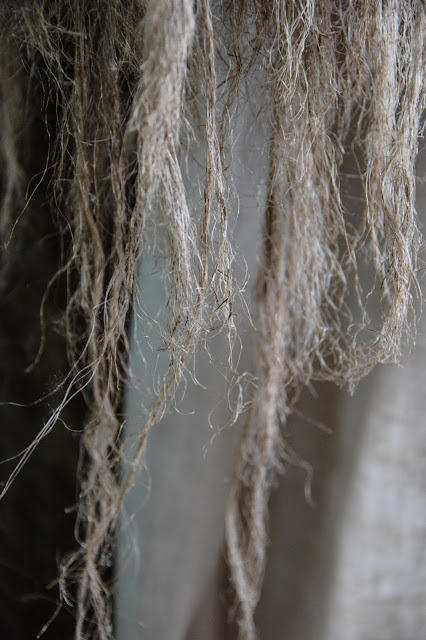Jean Pierre Gouy, Le artisan papetier.
I love the sound of this title which simply means, 'the artisan paper or the paper artist'. Jean Pierre has been making paper for almost 40 years now, in fact he started in 1977. He works alone in his home studio on a small farm situated in Les Bordes commune, near Saint-Clement in North Central France.
On Day 2 of our paper tour in France our bus wound its way along the tiny back roads with the ever vigilant Chantall, our tour guide, asking directions at every turn until we found his residence nestled in the rolling green hills of the beautiful French countryside.
 |
| Jean Pierre Gouy |
Jean Pierre's business goes under the name of Les Papiers du Moulin {The papers of the mill) and we were fortunate enough to visit La Maison du papier et de l'imprimerie (The paper and printing house) situated in a few of his well equipped farm sheds.
 |
| Shaking the frame filled with fibres to extract the water |
I never did get to ask him if he uses mulberry bark, which is the base for Hanji paper, as I was so fascinated by this gentle and unassuming French gentlemen, with the wonderful smile, who was so willing to let us into his studio and show us his craft. You can tell that he enjoys it immensely and he takes great pride in what he does for what at times, must be very little reward.
 |
| Tapping the frame |
 |
| Placing the sheet of fibres onto a layer of felt before compressing them to extract more water prior to the drying process |
 |
| Adding another layer of felt |
Paper for watercolor, acrylic, gouache
- Cotton, 250g/m2, 300g/m2, 500g/m2 and more on order
- Beer paper with barley, hop - This sounds interesting!!
Paper for etchings, engraving, lithography
- cotton, hemp paper since 120 g/m2
Paper for drawing, calligraphy
- laid paper since 80 g/m2
- papers made of nettles or straws
Paper for printing -typography, offset 1 or 2 colors-, for publicity
- laid papers since 30 g/m2
- papers with flower petals and ferns, straws
Paper for decoration
- papers with texture
Paper for bookbinding, restoration of ancient books
- laid paper since 60 g/m2
- hemp paper since 30 g /m2
From Jean Pierre's website
 |
He makes paper by order but a large part of his work, and I suspect the one he likes best, is to do with the restoration of old books. He had many of these lying around in his studio and he spoke of his love for collecting them, checking out the paper quality and the challenge of replicating the papers.
 |
| This is a page from a book that was dated 1659 |
He notes the texture and nature of the papers in the book, taking into consideration the period in which it was printed, the equipment that would have been used to make it and then he replicates the hand made papers and painstakingly repairs the old books page by page.
 |
| A drawing of the machinery used in making paper in the 18th and 19th Centuries |
To see him in action I've posted a very interesting video by Reliure et autres explications.TrÔo on my Hanji Happenings Facebook page. From this you can see how time consuming the processes are and what special talent is needed to complete the task from start to finish.
After a wonderful couple of hours he showed us into his showroom full of what he'd done over the years and gave us all a gift of samples of his papers, which were beautifully bound and sealed in a handmade paper envelope.
 |
| Paper samples |
I shall treasure this gift and as I look at it in years to come It'll remind me of the fond memories of this very special man and his hand made papers and wonder if in his golden years he's still making paper using centuries old techniques.



Comments
Post a Comment